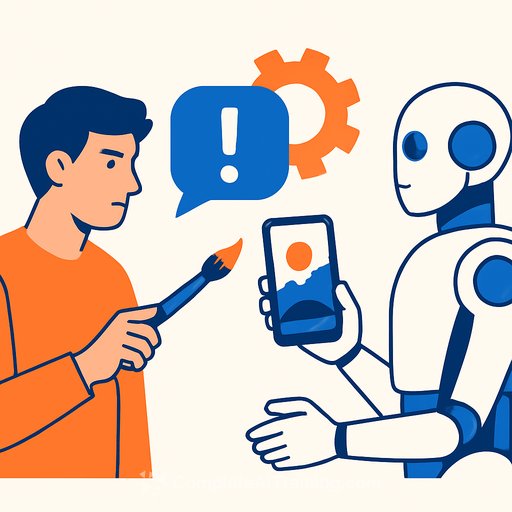Should WWE Use AI For Creative Storytelling?
WWE thrives on stories that feel human-flawed, bold, and full of heart. With the hire of Cyrus Kowsari to lead AI integration in creative services, there's a fair question on the table: should AI touch the booking and storytelling, or stay behind the scenes?
If you create for a living, this isn't just a WWE debate. It's a blueprint for how to use AI without losing the soul of your craft.
What's Actually Happening Inside WWE
Initial rumors suggested AI would be used to write storylines. That triggered pushback from fans who value authenticity over algorithmic polish. Since then, credible reporting indicates WWE has already used AI in small ways for years-noise reduction, organization, and search tasks-and Kowsari's job is to scale that kind of support, not replace writers.
As of October 21, the plan appears focused on digital assistance like match-history queries, content ops, and production support. In short: more assistive AI, not AI as head booker.
AI, Defined (Quickly)
AI uses data and algorithms to learn patterns, make predictions, and automate tasks that used to require human decision-making. The applications are wide. That doesn't mean every use is wise-especially where emotion and identity drive the product.
Where AI Fits (And Where It Doesn't)
Used well, AI removes friction so creatives can spend more time on the work only humans can do. Used poorly, it turns living characters into generic content.
Good Uses For AI In WWE
- Continuity and research: instant queries on match history, title runs, alliances, past promos, and stipulations.
- Editorial assist: noise reduction, transcript cleanup, metadata tagging, highlight pulls for sizzle reels.
- Scheduling and logistics: segment timing, travel optimization, card planning constraints, production checklists.
- Audience signals: trend spotting from social and merch data to inform what deserves more airtime.
- Quality control: flag clichés, tonal drift, or repetition across shows while keeping writers in charge.
Off-Limits For AI
- Booking finishes or long-term arcs that require trust, risk, and real-time locker room chemistry.
- Character voice, promos, and heat management that rely on lived experience and crowd reading.
- Decisions that impact safety, respect in the business, or the bond between talent and fans.
A Practical Hybrid Model Creatives Can Use
Think of AI as the assistant who never sleeps, not the showrunner. Keep the pen in human hands.
- Human-first pitches: writers craft the core idea; AI helps with research packets, alt beats, and continuity checks.
- Character bibles: lock tone, history, and boundaries; AI can check for drift but never invents canon.
- Scenario sandboxes: explore "what if" branches for pacing and event timing without letting the tool pick the ending.
- Ethics and consent: talent sign off on any AI-trained likeness or voice. No grey areas.
- Data hygiene: strip personal data, define training sets, and document how AI outputs are audited.
- Human sign-off: every script, finish, and arc gets final approval from the writers' room and producers.
Metrics That Actually Matter
- Time to draft: hours saved on research and prep without lowering story quality.
- Continuity score: fewer canon mistakes and contradictions.
- Promo resonance: live crowd reactions, watch-time, and post-show sentiment.
- Hit rate: percentage of AI-assisted pitches that make it to air with human rewrites.
Why Fans Pushed Back
Audiences can tell when a story is assembled by template. Reports of AI-written narratives often feel flat and derivative. Wrestling works because it's messy, personal, and alive on the mic and in the ring. Replace that with autocomplete and you erode the identity of the product.
Risks To Watch
- Job displacement: tools that "suggest" today can start "deciding" tomorrow. Draw the line early.
- Voice collapse: samey dialogue and arcs if teams let AI steer tone instead of reinforcing character.
- Trust debt: if talent or fans sense the magic is being outsourced, the brand pays for it later.
Bottom Line
Use AI to speed up the boring parts-research, cleanup, logistics, continuity. Keep humans on the moments that make people feel something-promos, finishes, long-term arcs. The day AI books the show is the day the show stops feeling like WWE.
Related
For Creatives Building An AI Stack
If you want structured training without losing your creative edge, explore curated AI courses by role: Complete AI Training - Courses by Job.
Your membership also unlocks:






